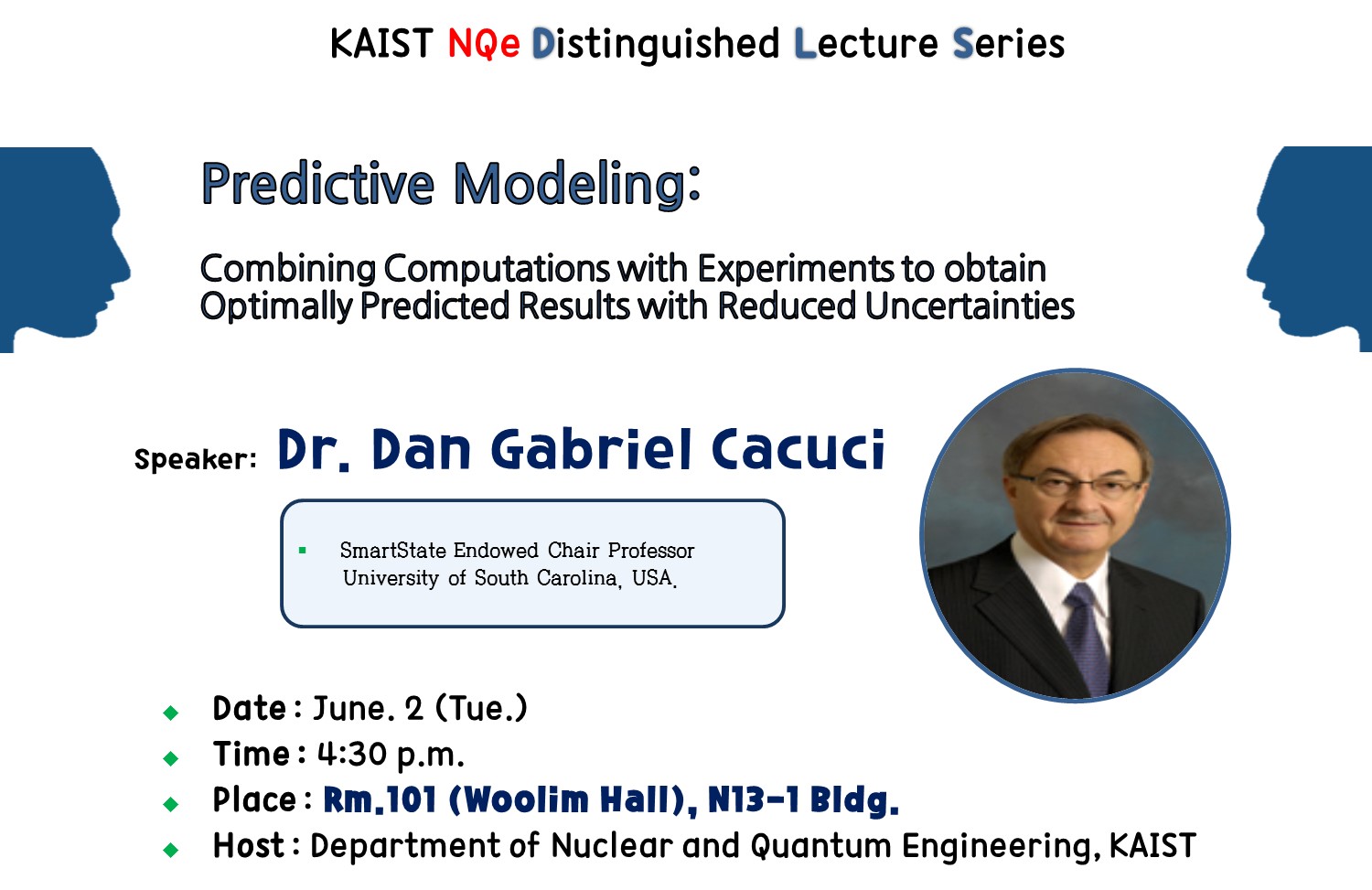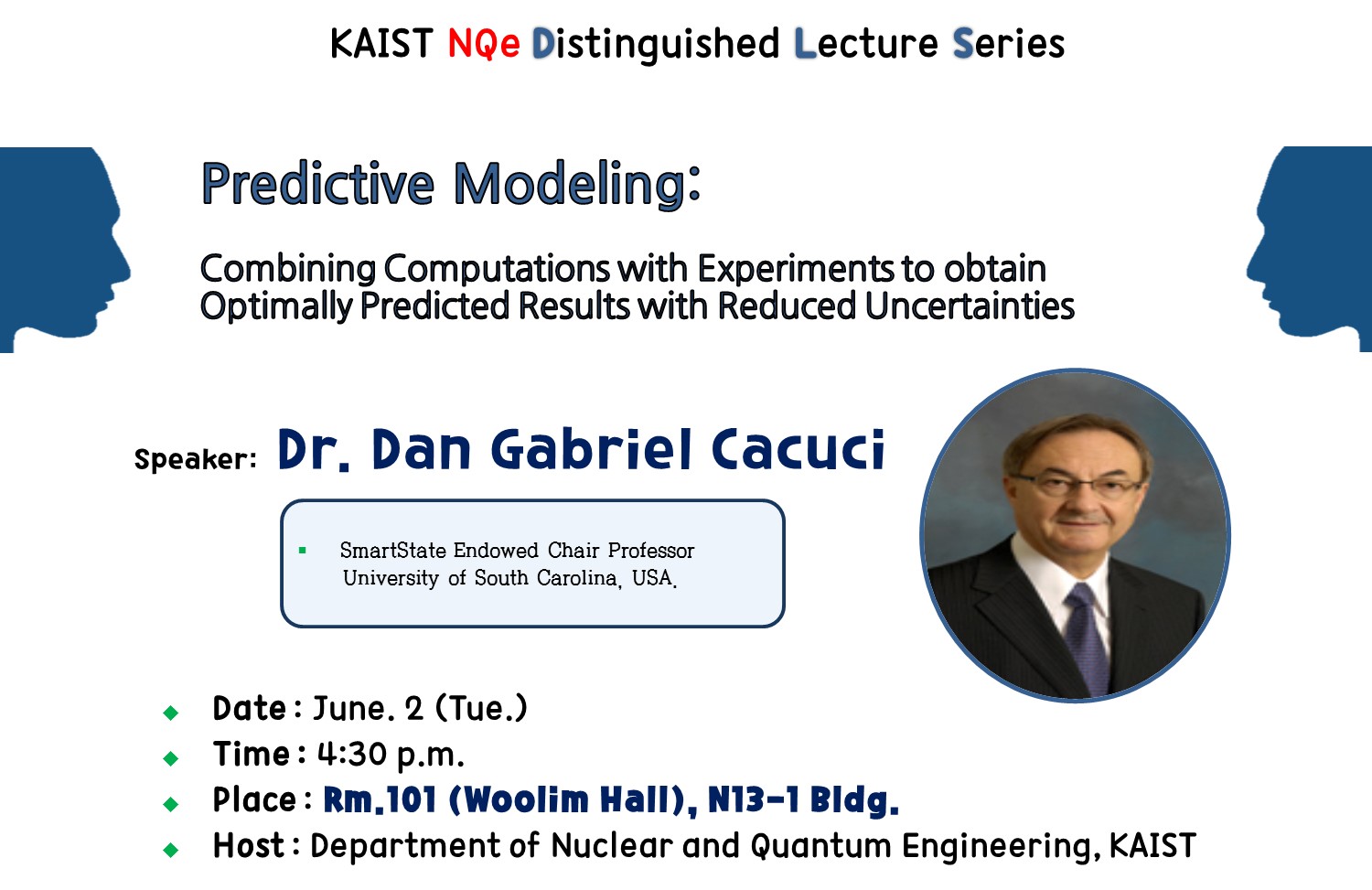2015-05-27


Please come and join "The 2nd
Annual KAIST NQE Distinguished Lecture Series". Find the details below.
1. Topic: Predictive Modeling: Combining Computations with Experiments to
obtain Optimally Predicted Results with Reduced Uncertainties
2. Date and Time: June 2(Tue) 2015, 4:30 pm
3. Place: N13-1 Building (Chang Young Shin Student Activity Center)/ Woolim
Hall (Rm.101)
4. Speaker: Dr. Dan Gabriel Cacuci, SmartState Endowed Chair Professor University
of South Carolina, USA.
• South Carolina’s
SmartState Endowed Chair Professor in Advanced Materials and Nuclear Power and
Director of the Center of Economic Excellence in Nuclear Science and Energy,
University of South Carolina (USC), USA
• Editor, Nuclear Science
and Engineering (a research journal of the American Nuclear Society), and The
Handbook of Nuclear Engineering
• Principal Research
Fellow, Department of Earth Sciences and Engineering, Imperial College London,
UK
5. Abstract:
Discrepancies observed in practice between experimental and computational
results provide the basic motivation for performing quantitative model
verification, validation, and model calibration through data assimilation.
Furthermore, numerical simulations of ever increasing fidelity and complexity
demand a broad multidisciplinary research on scalable algorithms and models,
including hardware, architecture, system software, libraries, workflows,
performance, verification, and application software. “Predictive modeling” incorporates
all of these activities, aiming at predicting “best-estimate” values for model
responses and parameters, along with reduced predicted uncertainties for these
quantities.
This Lecture will present the principles
underlying an original (2014) methodology for predictive modeling of
large-scale nonlinear coupled multi-physics systems. Illustrative applications
of this new methodology to large scale (millions of model parameters) reactor
physics and thermal-hydraulics systems will also be highlighted, demonstrating
the reduction in the predicted uncertainties for various fundamental design and
operational parameters (e.g., effective multiplication factor, reaction rates,
time-dependent void fractions). The Lecture will also sketch the principles
underlying a newly (2015) developed generalization of the “adjoint sensitivity
analysis methodology” for nonlinear systems, originally developed by the author
(1981) and widely applied since then (e.g., earth and atmospheric sciences,
econometrics). This generalization enables the exact and most efficient
computation of arbitrarily high-order response sensitivities to a large number
of model parameters. In turn, the availability of such high-order sensitivities
enables the computation of high-order moments (e.g., skewness and kurtosis) of
model response distributions, which subsequently enables the quantification of
non-Gaussian features (asymmetries, “long tails” characterizing rare events,
etc.) of model results.
The Lecture will conclude by
highlighting the main directions of ongoing applications (e.g., design of a
small fast LBE-cooled reactor, proliferation detection) and ongoing research
aimed at extending the author’s predictive modeling methodology, from second to
fourth-order, incorporating computational and experimental covariance, skewness
and kurtosis information. Successful completion of these ongoing developments
is expected to provide a paradigm-changing methodology for predicting
“best-quantified” design and operational parameters for characterizing the
features of large-scale non-linear systems.